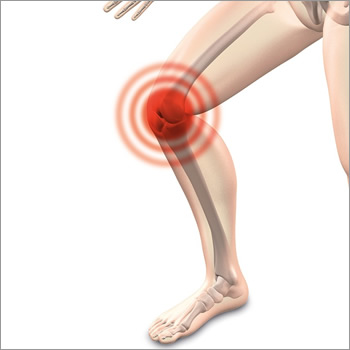Uvoider Compression Knee Sleeves – Tips for Preventing Runner’s Knee
What is Runner’s Knee?
Runner’s Knee is the dull pain around the patella, also known as the kneecap, the flat, rounded triangular bone. This is where the knee connects with the lower end of the thigh bone.
What are the causes of Runner’s Knee?
Runner’s Knee can be caused by a structural defect, or a certain way of walking or running that causes damage to the knee. Other contributing factors include:
- A kneecap that is too high in the knee joint
- Weak thigh muscles
- Tight hamstrings
- Tight Achilles tendons
- Poor foot support
- Excessive overuse
- Knee injury
What are the symptoms of Runner’s Knee
Common symptoms of Runner’s Knee include:
- Pain in and around the kneecap when you are running
- Pain after sitting with the knees bent
- Noise that is heard when bending or straightening the knee
- Pain in the kneecap that can be felt when touching it
How is Runner’s Knee diagnosed?
The symptoms of Runner’s Knee can look and feel like other knee conditions and knee health problems. As always, seek an opinion from your healthcare provider who can examine your knee, take X-rays if needed, discuss your knee health history, and make a diagnosis.
How is Runner’s Knee treated?
There are several things to consider when treating Runner’s Knees, such as your age, overall health, level of pain and discomfort you are experiencing, and how well medicines and therapies are working for you. The best course of treatment for Runner’s Knee is to stop running until the pain goes away or is within a tolerable range. Other actions you can take for your Runner’s Knee include:
- Placing cold packs on the knee
- Elevating the knee
- Using pain and inflammation medicines
- Compressing the knee with tight wraps or compression knee sleeves
Tips for Preventing Runner’s Knee
There are many things that can be done to prevent Runner’s Knee. Listed below are the tips that healthcare providers recommend:
- Lose weight. Every pound of weight adds four times that much stress to your knees. A mere five pounds can make a difference to your Runner’s Knees, and if you are overweight or significantly overweight, one of the best things you can do for your knees is to lose that weight.
- Stretch before running. Never start a run with cold muscles. Always warm up with stretching exercises so that your knees will not be stressed or injured.
- Make gradual increases. Whether you are striving for a particular distance or speed, make gradual increases in your progress. Seeking to achieve ambitious objectives too quickly can result in overuse of your knees which can lead to pain and injury.
- Maintain good running form. Be mindful of your running form. Seek to perfect your step and stride, and be sure to avoid taking irregular movements such as hopping up to a curb or obstacle in your path. Such movements can lead to a twisted ankle or buckling of the knee.
- Wear good running shoes. When your running shoes get old and no longer provide the support you need, it is time to get a new pair of shoes. Your feet and knees will thank you.
- Wear compression knee sleeves. Compression knee sleeves will hold the area of your Runner’s Knee snugly in place. They will provide comfort and support. And after you finish your run, leave the compression knee sleeves on as you wind down from your run. The compression of the sleeves will improve blood flow and oxygenation, helping your knees to recover more quickly.
Summary
Patellofemoral pain syndrome, more commonly known as Runner’s Knee, is an overuse injury. Affecting as many as thirty percent of runners, it is the most common running-related injury. Like many aches and pains associated with athletics and sports related injuries, you can’t go wrong using the RICE method. Rest. Ice. Compression. Elevation. For the compression member of this method, runners used to be limited to the use of tight wraps to achieve the benefits of compression. Nowadays, however, runners have many more products from which to get the benefits of compression. Increasingly, runners are opting for compression knee sleeves. They tightly hold the targeted area, increase blood pressure, and improve the circulation of the blood which results in better performance, prevention of swelling and inflammation, faster recovery, and prevention of injury. Best of all, compression knee sleeves are easy to put on and they don’t come loose or fall down.

